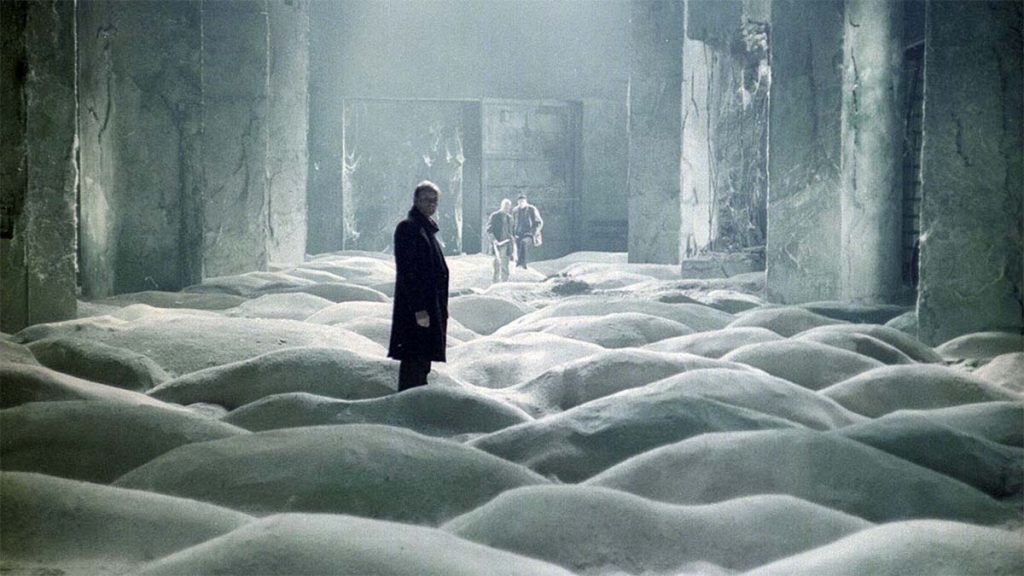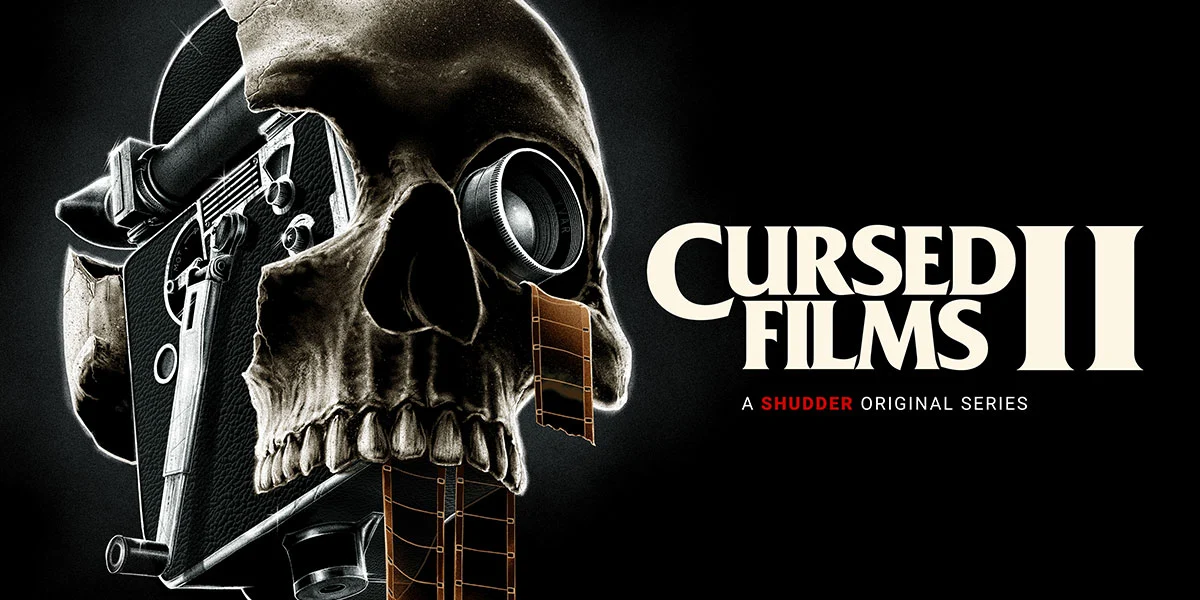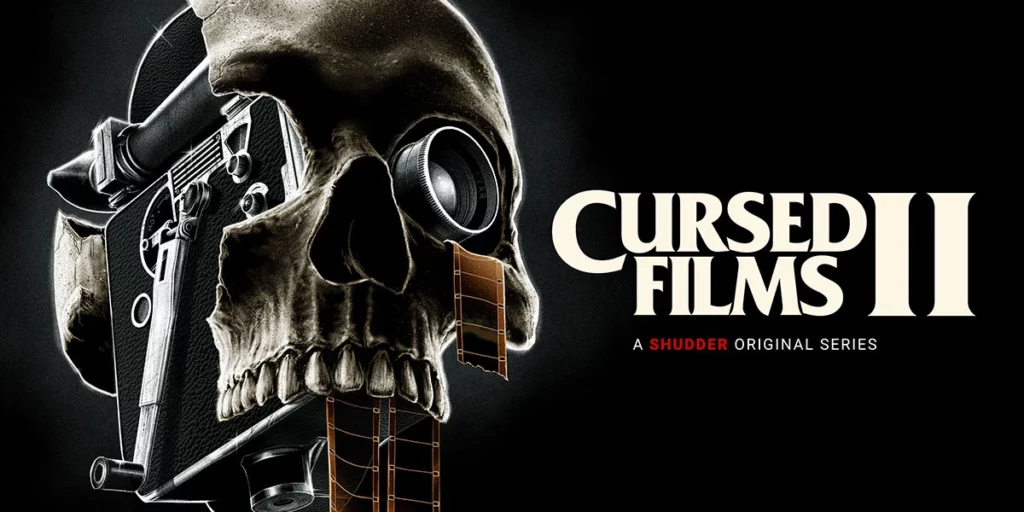Cursed Films II Episode 3 is a change of pace for the series as a passionate deep dive into the influential Soviet Union sci-fi cult film, Stalker.
Over the two seasons it has had so far, Cursed Films has created a small reputation for itself by exploring tough productions and the issues that rise from within. Whether that’s unexplained/eerie tragedies or supernatural influence on the sets of some of the most influential films, its made a strong effort to chronicle this specific angle of production that many may never discover as time passes and many of the films covered are either remade entirely or thrown to the wayside. That’s why episode 3 of Cursed Films II, covering the 1979 Soviet Union film Stalker, feels slightly different from the rest. Although it features many of the identifying traits of a “cursed film”, writer and director Jay Cheel, rather than taking the usual approach in previous episodes, decides to take the viewer on a journey. Less of a journey through the blood, sweat and tears that went into the film but more of a journey into just how much Stalker has influenced the filmmaking and wider cultural world.
At the beginning of episode 3 of Cursed Films II, we delve into the work of director Andrei Tarkovsky and how each of the interviewees have been affected by him. Whether they are former crew on his productions or scholars chronicling his filmography, we see a picture painted of a truly influential artist that may not have the same notoriety as Steven Spielberg or George Lucas, but that is just as much of a creative power. Cinematographer Roger Deakins speaks in detail of Tarkovsky’s shooting style and how it influenced directors he has worked with such as Denis Villeneuve on Blade Runner 2049. As a filmmaker in the Soviet Union, Tarkovsky was able to make political works that at first glance were able to hide themselves in the disguise of genre filmmaking. He was an extremely forward thinking filmmaker and, when production began for Stalker in 1976, Tarkovsky was set to tackle his most ambitious and challenging film yet, both for him and for the environments he was set to work in.
The three year production journey of Stalker was a chaotic one. From the film having to reshot from scratch three times to the long term diseases caught by those working on set, this is the most deadly and frustrating production covered on Cursed Films II so far, yet the approach to tackling this cursed production is much different. For much of the episode, we focus on filmmaker Arvo Iho (The Heart of the Bear), who takes us on a guide around the filming locations of Stalker and creates an almost haunting yet passionate peek inside the influence and love that the film has created for many. Arvo Iho is a massive fan and admirer of Tarkovsky and his passion is almost infectious as he guides the camera in the episode through this particular film in a much more intimate way than the previous episodes of the series have covered.

For the most part, the actual production woes of Stalker are kept to the sidelines to instead focus on the indirect impacts the film had on culture and the film industry, much like the Rosemary’s Baby episode earlier in the season. However, much like the previous episode, episode 3 is not quick to forget the tragedies of what happened around the film and even much after its release. Seven years after the release of Stalker, the Chernobyl disaster rocked the Soviet Union. The disaster concluded with the nearby city of Pripyat to become a ghost town, and many saw Stalker as a predictor and an almost cultural leader of this event on a media level. This, alongside the many deaths caused by the film taking place in such toxic industrial environments, does not shatter the almost romantic view from those who enjoy the film as a beautiful piece of art that took everything in Tarkovsky’s power to create. The story of Tarkovsky experiencing a heart attack early in the production ends with him being invigorated and having the power necessary to finish this work of art. Although the death of Tarkovsky may have been caused by Stalker, his work is still immensely celebrated even through all of the tragedy around him. As games are created that are heavily inspired by his work and more filmmakers discover Tarkovsky as a director, there’s a certain sense of positivity in this episode that manages to break out even during the more upsetting content in the episode.
As is standard for Cursed Films, included here are also many strange coincidences in the film, such as the date of Tarkovsky’s death being prominently featured in a scene and a bomb coming from “Bunker 4,” which is the same number as the reactor that caused the Chernobyl disaster. But, rather than it being shown here as an eerie explanation for problems on set, it instead adds to the allure and attraction that the Chernobyl disaster brought through tourism. As Cursed Films II episode 3 approaches its end, we delve somewhat into the impact that Chernobyl brought through various people, such as tour guides and self proclaimed “Stalkers” who explore the abandoned city of Pripyat based on their immense love of the film. Despite the tragedy of the Chernobyl disaster, the tourism industry has sunk its hooks into it as merchandise is sold and the word “Stalker” is reduced somewhat to the name of a grill bar for tourists to enjoy.
Cursed Films II continues to be a bolder and more articulate second season as it delves into films outside of the horror landscape and approaches bigger and more sensitive topics of conversation. The much more positive approach here than the previous episode is a welcome change of pace that manages to balance the tragedy and beauty of its subject extremely well and shows that even when something might be “cursed”, it might also be a blessing in disguise.

 loudandclearreviews.com
loudandclearreviews.comEpisode 2 of Cursed Films II is now available to watch on Shudder.

